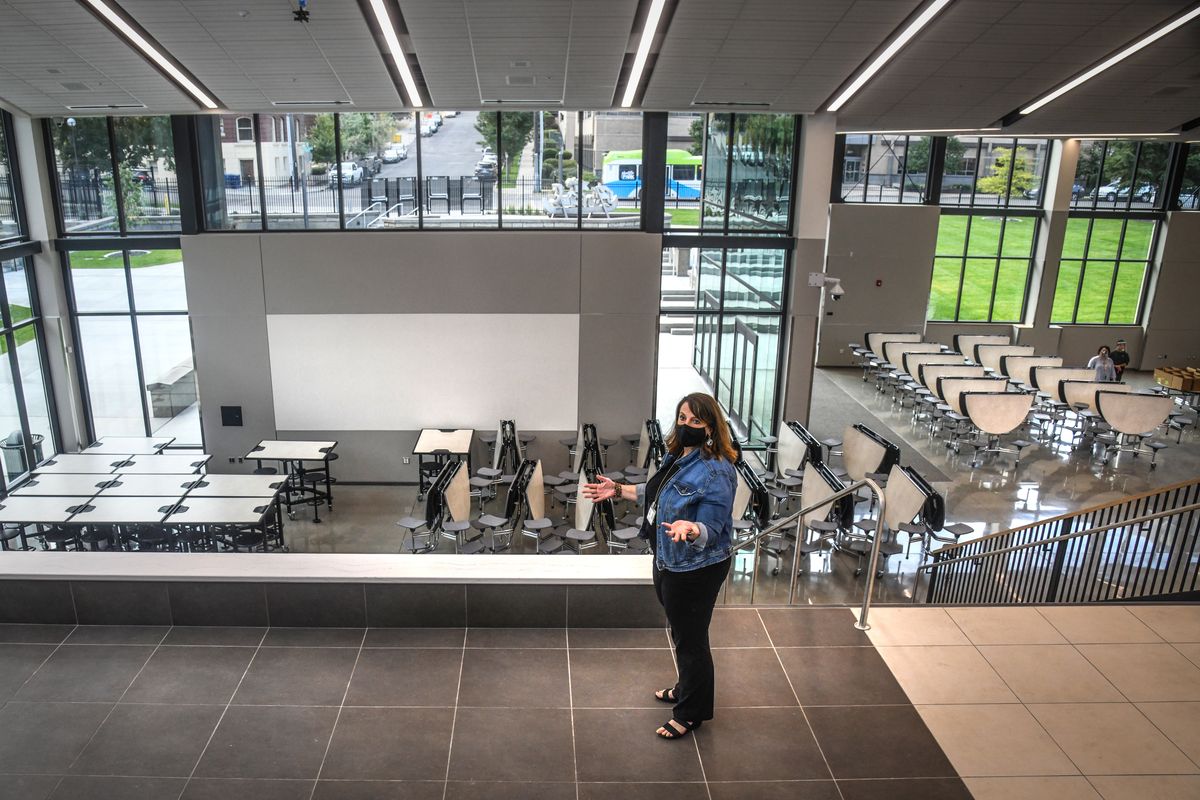Spokane Public Schools unveils new wide-reaching boundary proposals

It’s been almost 40 years since Spokane Public Schools made comprehensive changes to its boundaries.
The reasons were obvious Wednesday night, when the district’s board of directors got its first look at proposed changes that would affect thousands of students and their families for decades.
The product of more than a year of meetings by a 40-member committee, the proposal is wide-ranging, comprehensive and certain to get a strong reaction from the community.
The proposal includes detailed maps of the proposed boundaries for elementary, middle school and high school.
New boundaries are necessary because of the addition of three new, yet-to-be named middle schools, and the shift of sixth graders into those schools.
That alone will force major changes in the district’s feeder pattern; by the fall of 2023, when all three new buildings will be completed – more than four out of 10 students could see a change in their future middle school assignment.
However, the committee took advantage of the opportunity to make other refinements: a consolidation of boundaries, lower transportation time for many students, plans for growth and keeping as many students as possible on the same feeder pattern.
The proposal provides for 99% of elementary students to continue with their cohort on to the same middle school.
“Research shows that kids do better if they stay together,” associate superintendent Mark Anderson said Wednesday.
However, in a difficult balancing act, the committee was unable to address some of the district’s socioeconomic inequities, defined in the document as the percentage of students receiving free and reduced-price meals at school.
For example, the district addressed a longstanding complaint from residents in the middle-class Indian Trail neighborhood, where for decades students have been bused to North Central High School.
Beginning next year under the plan, those students would attend nearby Shadle Park. However, the change would mean that 68% of North Central students would be on free and reduced-price lunch; that would be an increase from the current 57%.
Ferris would also see an increase, from 38% to 42%, while Lewis and Clark – already the most advantaged high school in the district – would be even more so.
Under the proposal, LC’s low-income student population would drop from 39% to 28%.
The plan also would create two new middle schools that would sit at demographic extremes. The attendance area for the new South middle school would include mostly middle-class neighborhoods, with a 32% free and reduced-price lunch percentage that would be the lowest in the district.
Meanwhile, the new Northeast middle school would have the most challenging demographic in the city – 88% receiving free and reduced-price meals.
Early in the process, the committee was asked to explore the possibility of a more equitable map. However, Anderson said that couldn’t be accomplished without mangling attendance boundaries and increasing transportation costs associated with busing students.
“The question was how we enable as much diversity without blowing up the neighborhood cohort model,” Anderson said.
The proposal also streamlines the feeder pattern from middle to high school. Beginning in the fall of 2022, Salk and the new northwest school would feed into Shadle Park; Garry and Shaw would feed into Rogers; and Glover and the new northeast school would feed into North Central.
Other major proposed changes include the following:
• Hamblen Elementary, which currently feeds into Chase, would now feed into the new South middle school.
• Mullan Road Elementary students would move on to the new middle school instead of Sacajawea.
• Students at Moran Prairie, Adams, Hutton and Wilson would be split when they reach middle schools. However they would reunite in high school.
• Some students in the fast-growing Finch Arboretum and River Run neighborhoods, now attending Hutton, would instead go to Finch Elementary in northwest Spokane. That in turn would move some students into Holmes and Audubon.
• Stevens Elementary, which currently feeds into three different middle schools, would feed into the new Northeast building.
• Some elementary students in the Qualchan area would be shifted from Wilson to Hutton.
The changes would take effect in the fall of 2022 on the north side of the school district and a year later on the south side.
The upheaval would be mitigated by a grandfathering, or legacy, proposal that would affect some students who would otherwise be moved from their current schools.
The district hopes to finalize the boundaries by late June, but plans to get feedback from the community in a series of virtual public forums on April 15, 19 and 22.
The public will have another chance to comment at a board meeting on June 2.
The district hasn’t undertaken a comprehensive boundary change since 1982, when ninth graders were moved to high schools.